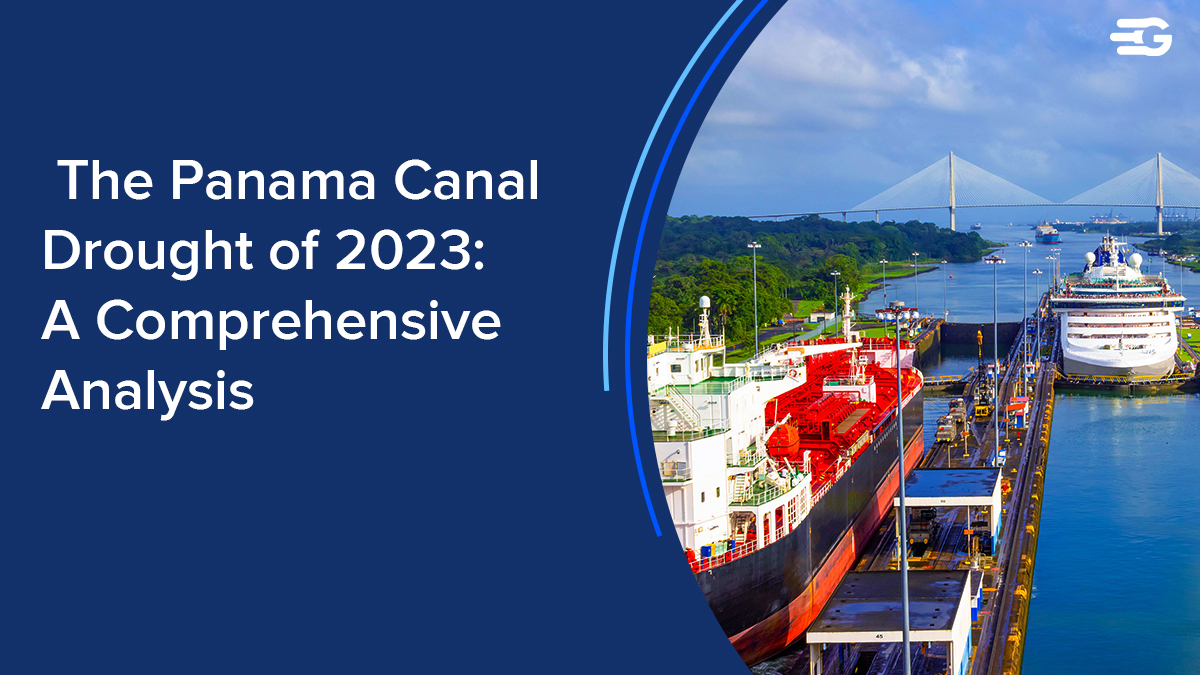The Panama Canal Drought of 2023: A Comprehensive Analysis
The Panama Canal, a pivotal artery in the heart of global trade, is currently facing an unprecedented challenge. The severe drought of 2023 has not only impacted the canal’s operations but has also sent ripples across the global maritime industry. This article delves deeper into the current situation, its implications, and the broader concerns about the future of the canal.
What is the Panama Canal?
The Panama Canal is an 82-kilometer-long waterway that connects the Atlantic and Pacific Oceans. Constructed in 1914, it was one of the most ambitious and challenging engineering projects ever undertaken. The canal serves as a crucial shortcut for ships, eliminating the need to navigate around the treacherous waters of South America, thereby reducing the time and distance of maritime routes. Over the years, it has played a pivotal role in global trade, facilitating the movement of goods and commodities between the East and the West.
Historical Significance of the Canal
Since its inception, the Panama Canal has served as a testament to human ingenuity. Over 900,000 vessels have passed through its locks, emphasizing its significance in global trade. The canal has not only been a marvel of engineering but also a strategic asset, influencing geopolitical decisions and trade policies over the decades.
Why is it Drying?
The primary reason for the canal’s diminishing water levels is the significant lack of rainfall. The current year has seen one of the driest rainy seasons on record for Panama. While periodic droughts are not uncommon, the intensity and duration of the current drought are alarming.
Climate change plays a pivotal role in this scenario. Global weather patterns, including the El Nino phenomenon, are exacerbating the drought conditions in Panama. The El Nino phenomenon, known to intensify drought conditions, has been particularly strong this year, leading to rainfall measurements around the canal being 30-50% below average.
Drought-hit Panama Canal to Restrict Access for One Year
In light of the severe drought, the Panama Canal Authority has announced that access to the canal will be restricted for a duration of one year. These restrictions include limiting the weight of vessels and the number of ships that can pass through daily. Such measures are deemed necessary to manage the limited water resources effectively and ensure the canal’s continued operation. The decision to extend the restrictions for a year underscores the gravity of the situation and the challenges ahead.
Impact on Supply Chain
The reduced capacity of the canal has had a cascading effect on global supply chains. Ships are experiencing extended waiting times, leading to delays in the delivery of goods. As we approach the holiday season, these delays could lead to potential shortages in various goods, from electronics to apparel.
Broader Implications for the Maritime Industry
With fewer ships passing through the canal, there’s a potential drop in revenue for the canal authorities. Preliminary estimates suggest a potential $200 million drop in earnings in 2024 compared to the previous year.
Future of Panama Canal Unclear Amidst Climate Change
The challenges faced by the Panama Canal in 2023 are a stark reminder of the uncertainties brought about by climate change. With changing weather patterns and increasing global temperatures, the canal’s future remains uncertain. While infrastructural upgrades and adaptive measures can provide short-term solutions, the long-term sustainability of the canal will require global collaboration, innovative water management solutions, and a commitment to combating climate change. The canal’s future is not just a concern for Panama but for the entire world, given its significance in global trade.
The Way Forward
The current crisis underscores the need for adaptive measures and long-term planning. Collaboration between governments, environmental experts, and global stakeholders will be crucial in charting a sustainable path forward.
In conclusion, the Panama Canal drought of 2023 serves as a stark reminder of the vulnerabilities in our global systems. It underscores the need for proactive measures, sustainable practices, and global collaboration to safeguard our future.
